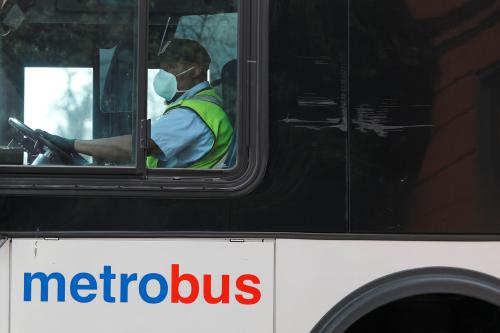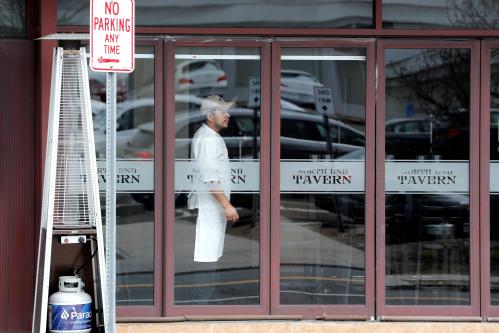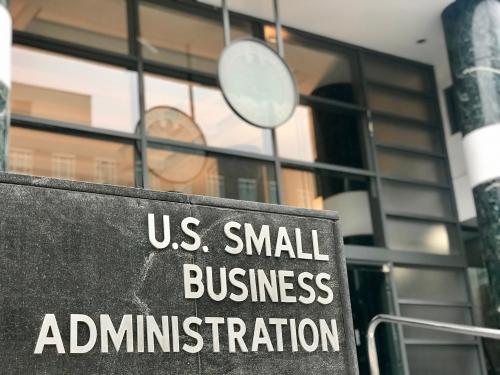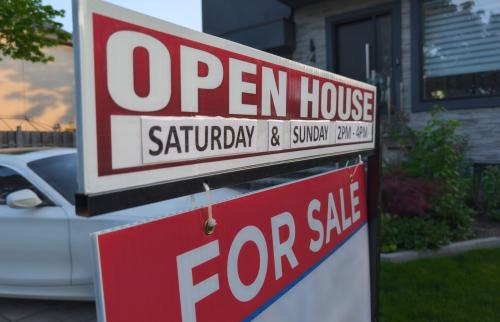The coronavirus pandemic has thrown America into a coast-to-coast lockdown, spurring ubiquitous economic impacts. Data on smartphone movement indicate that virtually all regions of the nation are practicing some degree of social distancing, resulting in less foot traffic and sales for businesses. Meanwhile, last week’s release of unemployment insurance claims confirms that every state is seeing a significant rise in layoffs.
And yet, while the public health and economic impacts of the virus are already massive, it would not be right to say that the crisis is evenly distributed. To the contrary, a new Brookings analysis of county-level infection and economic data shows that the nation’s COVID-19 case load not only remains heavily concentrated, but that the hardest-hit counties and metro areas constitute the very core of the nation’s productive capacity. The new analysis underscores the extent to which discussions of when to “restart” the nation’s economy will need to focus on conditions in the nation’s most-impacted urban hubs.
To explore these issues, we first analyzed the economic profile of the counties that have the highest rate of coronavirus infections, drawing on The New York Times’ case count on the number of infections in every U.S. county as of March 31.

Then we associated the infection data with basic economic data reporting counties’ employment and gross domestic product (GDP), to analyze the economic geography of the pandemic.
Strikingly, the analysis makes clear that the counties that are most stricken with virus cases are also—almost without exception—part of the nation’s most significant economic centers.
Total up the numbers and it becomes clear how heavily the nation’s COVID-19 infections concentrate in a short list of economically central, often job-rich counties on the coasts and the Great Lakes region. The nation’s 50 hardest-hit counties support more than 60 million jobs and $7.4 trillion in economic output, good for 30% of the nation’s employment and 36% of its GDP.
Zoom in on the 15 hardest-hit counties, and the numbers suggest that the nation is losing crucial parts of local economies that account for nearly 26 million jobs and $3.3 trillion in output, representing 16% of U.S. GDP and 12.9% of employment. In other words, the health crisis and labor market breakdown of just a few hard-hit urban counties is undercutting the entire nation’s economic might.

But even that doesn’t fully capture the nature of the nation’s big-county economic paralysis. The 15 counties with the most COVID-19 cases normally punch way above their weight in a healthy economy—but now represent a drag on the nation’s economy in ways that have reverberating effects.

All of the 15 hardest-hit counties lie within major U.S. metropolitan areas that are themselves under broader lockdowns due to the pandemic. For example, six of the 15 are components of the greater New York region, the entirety of which is currently under a stay-at-home order. Another six counties—including Los Angeles County in California, King County in the Seattle region, and Wayne County in the Detroit metro area—broaden the list to include central counties in seven of the nation’s biggest metro area economies: New York, Los Angeles, Chicago, Seattle, Detroit, Miami, and New Orleans.
To put a finer point on it, New York City, Los Angeles County, and Cook County—each contending with 2,000 or more COVID-19 cases—are the central counties of the nation’s three largest metropolitan areas, which together represent 17% of the nation’s economic activity.
In this respect, the core takeaway from the pandemic’s geography—measured in COVID-19 cases, county-by-county—is that of clustering. While the crisis feels universal and total, its city-by-city spread has so far remained highly concentrated in many of the metropolitan areas that have been most central to driving the nation’s big-city, globally networked economy.
Which makes sense: As Emily Badger at The New York Times has noted, the major characteristic that makes cities remarkable—density—also leaves them most exposed in a pandemic.
As to what all of this means for policymakers, the statistics presented here counsel great care in deciding when and how to “restart” the nation’s economy in the coming months. Specifically, the extremity of the health crisis in the nation’s central economic engines suggests policymakers would do well to check in with the nation’s hardest-hit metro areas before encouraging states to end their stay-at-home orders.
After all, this new information shows that it is precisely the places that disproportionately anchor the nation’s economy that are coping with the greatest burdens of the pandemic. Governors and President Trump will need to ensure the pandemic is fully under control in America’s core hubs before trying to “reopen” America for business.
The Brookings Institution is committed to quality, independence, and impact.
We are supported by a diverse array of funders. In line with our values and policies, each Brookings publication represents the sole views of its author(s).









Commentary
COVID-19 is hitting the nation’s largest metros the hardest, making a “restart” of the economy more difficult
April 2, 2020